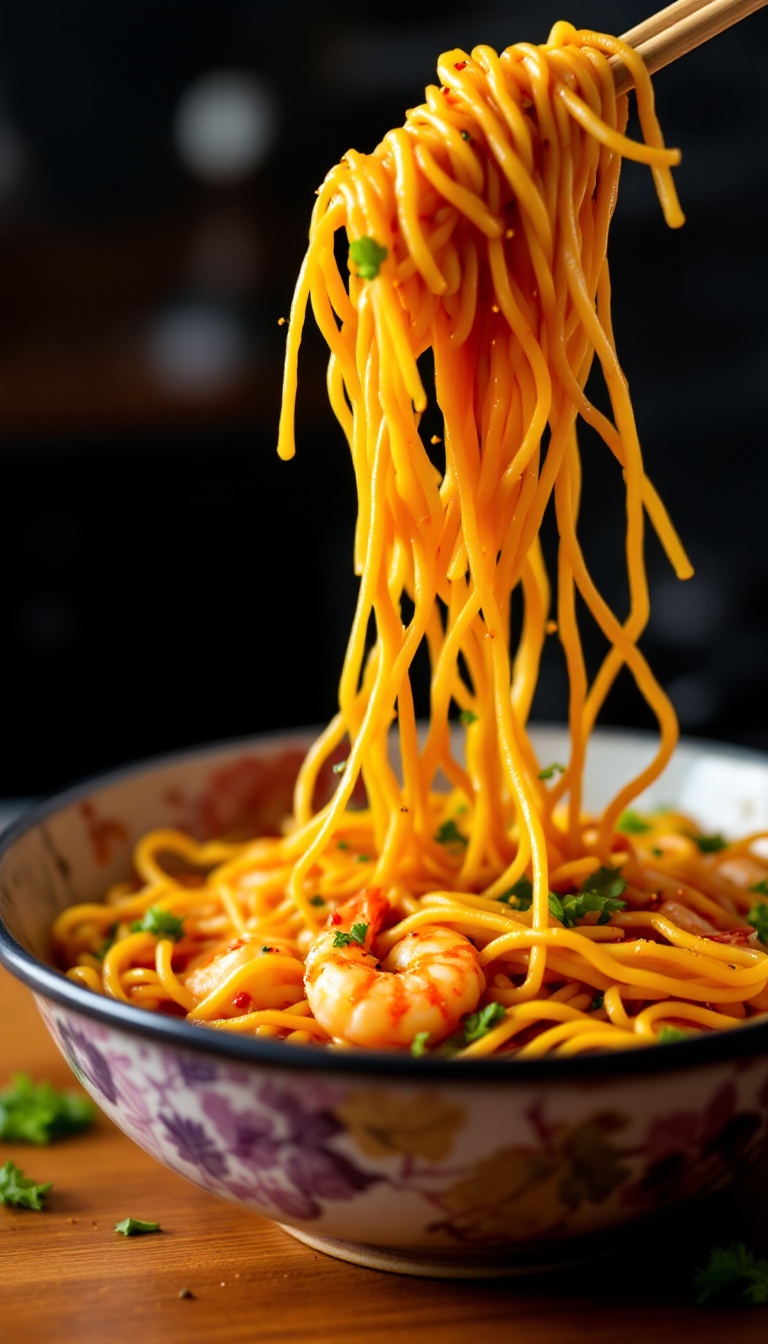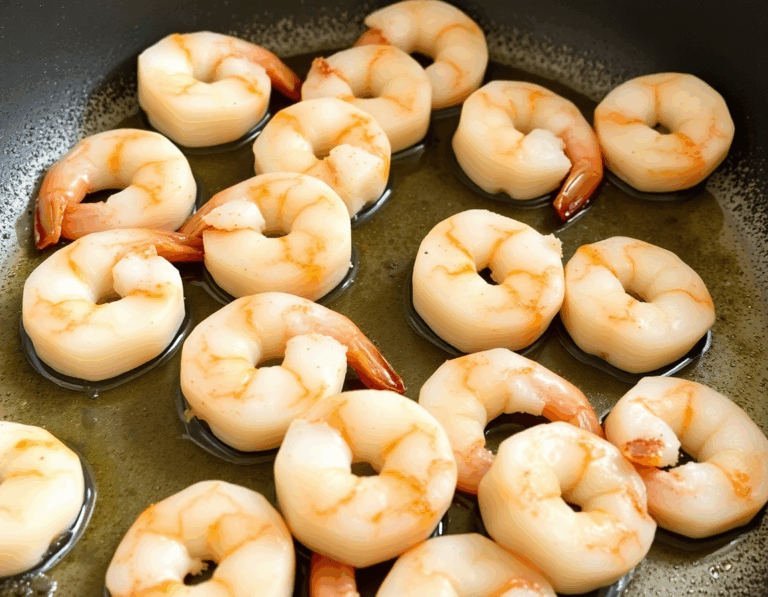Imagine a plate that sends your taste buds on a rollercoaster ride—fiery, garlicky, and oh-so-satisfying. These Garlic Chili Oil Noodles with Shrimp are like the culinary version of a blockbuster movie, where every bite has a plot twist. I stumbled upon this dish while binge-watching food vlogs late at night, and let me tell you, it’s like discovering a hidden gem in the chaos of the internet.
Steps
- Boil a large pot of water for the noodles. In a separate bowl, mix all the chili oil ingredients together until well combined.
- Season the shrimp with salt and pepper. Heat a tablespoon of oil in a non-stick pan over medium-high heat, add the shrimp in a single layer, and cook for 1-2 minutes per side until fully cooked. Remove the shrimp from the pan and set aside.
- In the same pan, add another tablespoon of oil and place the bok choy halves cut-side down. Sauté for about a minute until the bottom is golden, flip, and cook for another 30 seconds. Remove from the pan and set aside.
- Cook the noodles in the boiling water according to the package instructions until al dente.
- While the noodles are cooking, add the remaining oil to the pan. Sauté the garlic, ginger, and white parts of the scallions for 1-2 minutes until the garlic is lightly golden. Carefully pour in the chili oil mix, stirring to combine, and remove from heat.
- Strain the cooked noodles and immediately add them to the pan with the sauce. Add the cooked shrimp and the green parts of the scallions, tossing everything together until evenly coated.
- Serve the noodles immediately with the sautéed bok choy on the side and enjoy.
Ingredients
- Fry Ingredients:
- 1 pound jumbo raw shrimp, peeled and deveined
- Fine sea salt and freshly-ground black pepper, to taste
- 1/3 cup avocado oil (or any neutral oil), divided
- 4 baby bok choy, halved vertically
- 8 ounces uncooked wide knife-cut noodles (or your choice of noodles)
- 6 large garlic cloves, minced
- 2 scallions, thinly sliced (white and green parts separated)
- 1 tablespoon minced fresh ginger
- 2 tablespoons low-sodium soy sauce
- 2 tablespoons sesame seeds
- 1 to 2 tablespoons gochugaru flakes (or powder)
- 1 tablespoon Chinese black vinegar
- 1 teaspoon granulated white sugar
- 1/4 teaspoon fine sea salt
FAQ
- Can I use a different type of noodle for this recipe?
- Absolutely! While the recipe suggests using Chinese wide knife-cut wheat noodles, you can substitute with any other fresh or dried noodles, such as rice noodles, udon, or ramen, based on your personal preference.
- What can I use if I can’t find gochugaru?
- If gochugaru is not available, you can substitute with crushed red chili flakes, though the heat level will be higher. Start with a smaller amount and adjust according to your spice preference.
- Is there an alternative to Chinese black vinegar?
- If Chinese black vinegar is hard to find, you can use rice vinegar as a substitute. Keep in mind that the flavor profile will be slightly different.
- How can I make this recipe vegetarian or vegan?
- To make this dish vegetarian or vegan, simply omit the shrimp and replace it with tofu or your preferred plant-based protein.
- Can I prepare this dish in advance?
- Yes, these noodles can be made in advance and are delicious when served both hot and cold. Consider making a double batch so you can enjoy leftovers for lunch the next day.
Tips
- Prepare Ingredients in Advance: Since the cooking process moves quickly, especially once you start sautéing the shrimp, it’s helpful to have all your ingredients prepped and ready to go beforehand. This ensures everything cooks evenly and is served hot.
- Use Gochugaru for a Unique Flavor: If you’re not familiar with gochugaru, it’s worth seeking out. This Korean chili adds a distinct smoky heat that enhances the dish and can be a great milder alternative to other chili flakes in various recipes.
- Adjust Spice Level to Taste: The recipe has a medium-high spice level as written. If you prefer milder flavors, start with less gochugaru and adjust according to your taste preference.
- Exercise Caution with Hot Oil: When adding the chili oil mix to the hot pan, be cautious as the mixture can cause the oil to bubble vigorously. Stir carefully to avoid any splatters.
Equipment
- Chinese Wide Knife-Cut Noodles: If these specific noodles are not available locally, they can be found online.
- Gochugaru (Korean Chili Flakes or Powder): This specific type of chili product might not be readily available in all grocery stores.
- Chinese Black Vinegar (Chinkiang Vinegar): A specialty ingredient that may need to be ordered online if not available locally.

